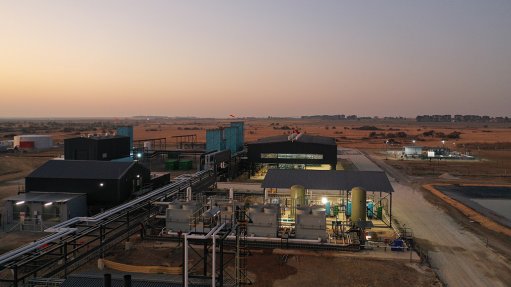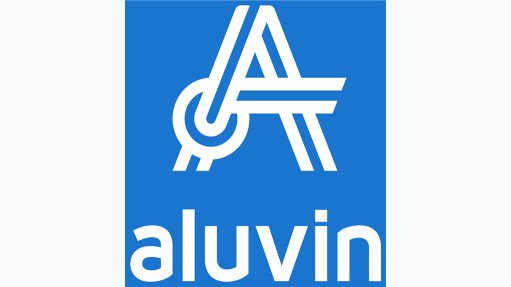Institute establishes drive for CO2 as natural refrigerant
Local heating, ventilation, air conditioning and refrigeration (HVACR) industry body the South African Institute of Refrigeration and Air Conditioning (SAIRAC) has established a drive to introduce the option of using carbon dioxide (CO2) as a natural refrigerant, referred to as R744, through technical talks held at its Johannes- burg and KwaZulu-Natal centres.
SAIRAC national council president Marius La Grange states that this drive is intended to encourage more role-players in the industry to develop solutions using R744 as refrigerant.
He explains that CO2 was used up until the mid-1900s in subcritical conditions, during which it was operated at a condensing temperature of about 29 ºC or lower, as the critical temperature for CO2 is 31 ºC.
This solution was ideal for boats that required refrigeration to transport meat, as water from the Atlantic Ocean could be circulated through a heat exchanger to perform the condensing of the subcritical CO2 systems reliably. Ammonia was also widely in use but the toxicity made it less desirable for shipping applications.
These solutions were, however, not an option in regions with warmer ambient temperatures, as well as in scenarios where there are no other cooling mediums like a cold river for example to have a condensing temperature below 31 ºC.
Synthetic refrigerants were eventually developed, as they phased out many of the operational challenges that R717 and R744 had at the time. Chorofluorcarbons (CFCs)were used as synthetic refrigerants, but their high ozone depleting potential became a reason to phase them out.
Hydrochlorofluorocarbons (HCFCs) with less or no ozone depleting potential were then developed. Leakage of these into the atmosphere, however, presented significant global warming potential (GWP).
New solutions had to found and with newer materials and manufacturing technologies, as the use of a natural refrigerant like R744 was more viable.
Recent advancements were made to accommodate the conditions of a warmer ambient to allow for the reliable operation of transcritical applications in South Africa, says La Grange.
“There is probably about 300 or more transcritical applications in South Africa already, and many more in Australia. This was not the case ten years ago, but this option is now proven to be workable and is a viable solution in many suitable applications.”
He also notes, however, that R744 trans- critical solutions would not be suitable for all applications, particularly in small heat load applications. Where R744 would not be ideal, however, R290 and R600a could be used.
La Grange also highlights that this resulted in an effort by the institute to make industry aware of these advances and applications, through case studies and similar talks and discussions.
Subcritical solutions are less complex to develop, with alternative applications ranging from warehouses to retail, while transcritical installations are far more complex, but vast progress has been made to aid the design and operation of such systems at a lower capital cost, he states.
Subcritical systems normally operate at a pressure of 45 bar, which La Grange highlights close to that of an hydrofluorocarbon (HFC) system operating at 31 bar, which is fairly common. In addition, many standard components in HFC systems have been upgraded to function in subcritical CO2 systems thus reducing the cost of subcritical systems.
He claims it is an ideal time for newcomers to the HVACR industry to gain from the lessons learnt in the last decade.
SAIRAC began hosting Dreosti Memorial lectures in 1998, a year after founding president Dr Guido Dreosti died. These lectures present the objectives of SAIRAC to promote the unrestricted distribution of knowledge and information.
SAIRAC hosted various Dreosti Memorial lectures in June throughout the country. These lectures considered the phasing out of HCFC-22, commonly referred to as R22, as a refrigerant and using R290 as an alternative natural refrigerant.
La Grange claims that these talks have assisted in introducing hydrocarbons and providing attendees with exposure to experiences that companies have had in applications using this refrigerant.
“Many had the opportunity to see that their current skills sets are very close to the skills required to design, build and safely operate systems using R290 as a refrigerant,” he points out.
He also adds that R290, and other hydrocarbons such as R600a, are almost exclusively used in all new domestic appliances that have been imported since 2015. This has been prompted by global manufacturers not using HFCs in domestic applications, where possible, owing to the global pressure to phase out HCFC’s and HFC’s.
Subsequently, with new installations not allowed to use R22 refrigerants since January 2015, the amount of these refrigerants that has been imported into the country has more than halved.
While this is positive, La Grange emphasises that the slow growth of the South African economy has possibly contributed towards a reduced demand for R22 – as it is one of the cheapest refrigerants available – which has ozone-depleting potential.
In addition to new-generation alternative refrigerants, such as R290, being less harmful to the environment, La Grange stresses that long-term solutions that use natural refrigerants will also be more energy efficient if selected and applied correctly.
While energy use is regarded as an indirect effect on the environment, La Grange emphasises that energy efficiency has an increased importance with new-generation refrigerants in South Africa, as the majority of the country’s electricity is generated through burning coal.
“There is much on offer in the HVACR sector for newcomers to learn from in terms of training courses and technical talks with SAIRAC. One of the biggest challenges to new comers is to gather the information to improve your decision-making processes with more insight,” he concludes.
Article Enquiry
Email Article
Save Article
Feedback
To advertise email advertising@creamermedia.co.za or click here
Comments
Press Office
Announcements
What's On
Subscribe to improve your user experience...
Option 1 (equivalent of R125 a month):
Receive a weekly copy of Creamer Media's Engineering News & Mining Weekly magazine
(print copy for those in South Africa and e-magazine for those outside of South Africa)
Receive daily email newsletters
Access to full search results
Access archive of magazine back copies
Access to Projects in Progress
Access to ONE Research Report of your choice in PDF format
Option 2 (equivalent of R375 a month):
All benefits from Option 1
PLUS
Access to Creamer Media's Research Channel Africa for ALL Research Reports, in PDF format, on various industrial and mining sectors
including Electricity; Water; Energy Transition; Hydrogen; Roads, Rail and Ports; Coal; Gold; Platinum; Battery Metals; etc.
Already a subscriber?
Forgotten your password?
Receive weekly copy of Creamer Media's Engineering News & Mining Weekly magazine (print copy for those in South Africa and e-magazine for those outside of South Africa)
➕
Recieve daily email newsletters
➕
Access to full search results
➕
Access archive of magazine back copies
➕
Access to Projects in Progress
➕
Access to ONE Research Report of your choice in PDF format
RESEARCH CHANNEL AFRICA
R4500 (equivalent of R375 a month)
SUBSCRIBEAll benefits from Option 1
➕
Access to Creamer Media's Research Channel Africa for ALL Research Reports on various industrial and mining sectors, in PDF format, including on:
Electricity
➕
Water
➕
Energy Transition
➕
Hydrogen
➕
Roads, Rail and Ports
➕
Coal
➕
Gold
➕
Platinum
➕
Battery Metals
➕
etc.
Receive all benefits from Option 1 or Option 2 delivered to numerous people at your company
➕
Multiple User names and Passwords for simultaneous log-ins
➕
Intranet integration access to all in your organisation
















